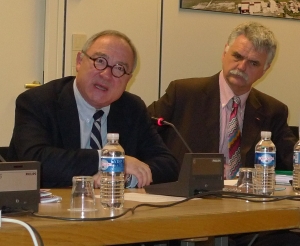 People don’t realize how much their daily lives depend on space technology, according to the head of the European Space Agency.
People don’t realize how much their daily lives depend on space technology, according to the head of the European Space Agency.
“To help EU citizens understand how much they rely on space in their daily lives,” ESA Director-General Jean-Jacques Dordain told AAPA members on Dec. 1, “I would like to have a ‘Space Day’ every year when I turn off all the satellites. Then they will see how important space is to them.”
Speaking at ESA’s Paris headquarters, he said ESA’s long-standing cooperation NASA is increasing against a background of squeezed national budgets.
One example will be to spread the cost of hugely expensive Mars missions, he said, and as the “Red Planet” is easiest to reach for reasons of orbits every two years, ESA and NASA plan to launch joint missions in 2016 and 2018, with partners providing in alternation the orbiter and the lander.
Dordain said it’s also important to study the Earth’s neighboring planets Venus and Mars for reasons of better understanding climate change.
Mars was once rich in water; now it’s dry — how did this happen? The role of carbon dioxide in planet warming first became apparent, Dordain said, through studies of the atmosphere of Venus. Farther out in the solar system, he spoke proudly of the performance of ESA’s probe Huygens, which in 2005 made the most distant landing ever achieved on Titan, Saturn’s largest moon. There the methane atmosphere resembles what Earth would have been like at its beginnings.
Dordain discussed the delays that are dogging the start-up of the Galileo global navigation satellite constellation. While launch of the first four satellites is planned for early next year, full implementation of the 30-satellite system won’t be reached until 2016, he said.
He outlined ESA’s other missions and plans, and provided numbers on the agency’s size and scope. He insisted that the economic impact on Europe went far beyond the agency’s own 2,200 staff and the 30,000 direct jobs that the space industry has generated, estimating that hundreds of thousands of indirect jobs have been created thanks to the space sector.
At the 19-nation ESA, Dordain pointed out, “We know what international cooperation is,” adding: “It’s not always easy to cooperate — it’s difficult, but successful every day.”
Cooperation extends beyond Europe to NASA, Russia, Japan (a mission to Mercury) and India (to orbit the moon), he noted.
After Dordain’s presentation and a Q&A session, many AAPA members continued the discussion with other ESA officials over a buffet lunch.
— John Davidson